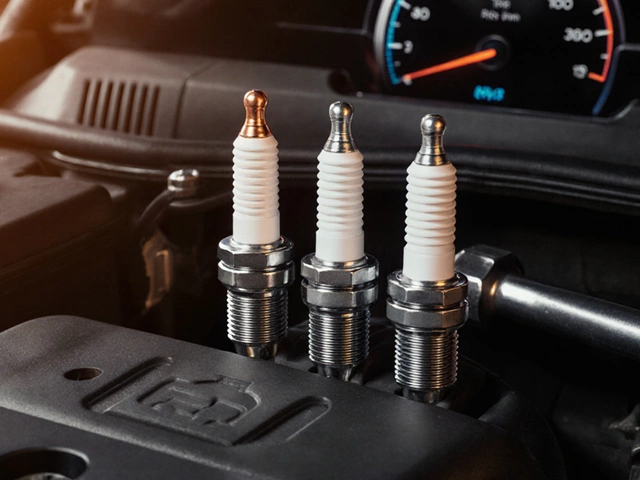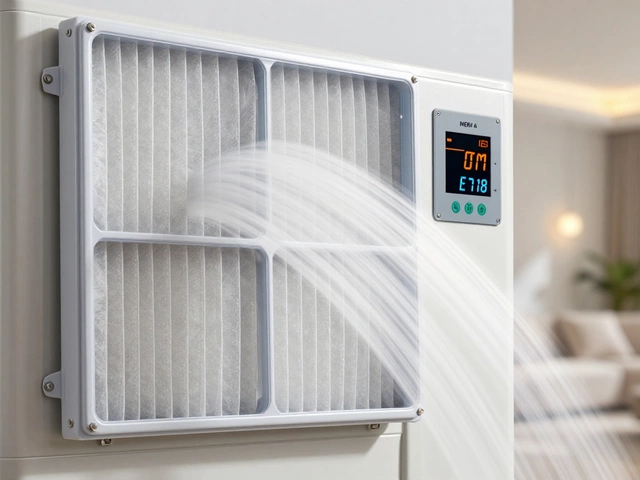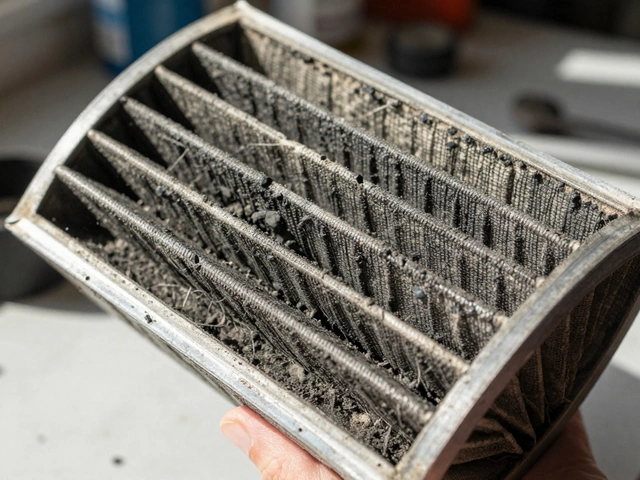
So, what’s the big deal with bad spark plugs? Think of them as the tiny but mighty warriors in your car's engine. Spark plugs ignite the air-fuel mixture in the cylinders to keep your engine running. Neglect them, and you might be in for a bumpy ride—literally.
Have you noticed that your car isn't moving quite as smoothly? Or maybe your gas mileage has suddenly taken a nosedive. Yup, bad spark plugs could be the sneaky culprits. When these little guys start to wear out, you'll feel it in the power, fuel efficiency, and overall performance of your vehicle.
Once those plugs lose their mojo, your engine can't burn fuel efficiently, which means you might end up spending more at the pump. Plus, ignoring the problem can escalate into bigger engine troubles down the road. Let's dig into why looking after your car's spark plugs is not just for gearheads but for anyone who enjoys a smooth drive.
- Understanding Spark Plugs: The Basics
- Signs Your Spark Plugs Are Failing
- Immediate Consequences of Bad Spark Plugs
- Long Term Damage: What Happens Over Time
- How To Check and Replace Spark Plugs
- Best Practices for Spark Plug Maintenance
Understanding Spark Plugs: The Basics
Alright, let's break down what spark plugs are all about. They're small but crucial components in your car's engine. Think of them as the key players that kickstart your car's engine. Without them, you're not going anywhere.
Each spark plug sits right at the top of a cylinder head in your engine. Their job? To create a spark (duh!) that ignites the air-fuel mix in the cylinder. This ignition is what keeps your engine running smoothly. In short, no spark, no fire, no moving car.
And here's the deal. A typical car has four to eight spark plugs, depending on the number of cylinders your engine has. So, the more cylinders, the more spark plugs you need to keep things running.
As for material, spark plugs aren't all the same. You'll come across ones made of copper, platinum, or iridium. Copper ones are cheap but wear out quickly. Platinum and iridium types last longer and are generally more efficient. So, if you're all about performance, you might wanna lean toward those.
What's really neat is their longevity. Some high-end spark plugs can last up to 100,000 miles before needing a replacement. Of course, that depends on your driving habits and how well you maintain the engine.
Ever wondered how big a difference the spark plug gap makes? That's the distance between the center and the side electrode. This gap has to be just right for the spark plug to function at its best. Too wide or too narrow, and you're looking at misfires and decreased performance.
How do you even check your spark plugs? Pop open your hood, and you'll see them lined up neatly. Just remember, they're small but mighty. Neglect or bad spark plugs can lead to some annoying and expensive car troubles. Keeping an eye on them is key if you want your engine purring like a kitten.
Signs Your Spark Plugs Are Failing
Alright, so how can you tell if your spark plugs are throwing in the towel? Sometimes, the signs are hiding in plain sight. And if you catch them early, you can save yourself from more serious engine troubles down the line.
First off, if your car’s acceleration feels like it's more of a leisurely stroll, you might be dealing with bad spark plugs. Engines rely on those quick sparks to push the pistons effectively. Without efficient ignition, the engine just won't have the same get-up-and-go.
Another glaring clue is rough idling. If you're sitting at a stoplight and your car feels like it's got the fidgets, guess what? Spark plugs might be the culprits. They could be misfiring, which leads to a restless engine.
And let's not forget about those gas costs. Notice more trips to the gas station? Bad spark plugs mean your engine isn’t burning fuel as efficiently as it should. The combustion process becomes uneven, burning more fuel for less output. Not cool for your wallet.
Keep an eye on your dashboard light too. The Check Engine Light often throws a tantrum when spark plugs are going south. Many drivers ignore it, hoping it’ll go away, but that's a risky move. Ignition issues trigger this warning, signaling it's time for a check-up.
Also, pay attention to starting problems. If it feels like your car is hesitant to wake up on those chilly mornings, it might not just be the cold. Worn out spark plugs struggle to create the spark needed to kick things off smoothly.
To wrap it up, here are the tell-tale signs at a glance:
- Weak acceleration and reduced power
- Rough idling and engine misfires
- Poor fuel economy
- Illuminated Check Engine Light
- Difficulty starting the car
Spotting these issues early can save you from the snowball effect of engine damage. So, keep these signs in mind and nip those spark plug problems in the bud!
Immediate Consequences of Bad Spark Plugs
When your spark plugs are letting you down, the first thing you'll notice is a less peppy drive. Having trouble getting up hills or accelerating? Those worn-out plugs are probably the reason. If they're not sparking well, they're not igniting the fuel mixture efficiently, causing your engine to struggle.
Another thing you'll spot is an increase in fuel consumption. Your car needs more gas to maintain the same power. It's like trying to swim with one arm—way harder and less effective. So, if your wallet feels lighter after every fill-up, those bad spark plugs could be silently robbing you.
Apart from these, you might experience engine misfires or rough idling. When a spark doesn't happen as it should, you'll hear or feel it, like a hiccup in your engine's rhythm. It's unsettling, especially when you’re at a stoplight and the car just doesn't feel smooth.
Not addressing these issues can snowball into bigger, pricier problems. If your engine's struggling too much, it can lead to overheating, which nobody wants. Plus, the longer you wait, the more potential there is for causing damage to other parts of your engine system.
If you've noticed any of these signs, checking those plugs should be on your to-do list, like yesterday. It's a small fix that can prevent a headache of repairs down the line.

Long Term Damage: What Happens Over Time
Okay, so maybe your car is still running with those bad spark plugs, and you haven't noticed anything dramatic. But don't let that fool you. Over time, bad spark plugs can cause damage that's way more costly than just swapping them out when needed.
One of the first things you might see is your check engine light flickering on. Spark plugs that aren't functioning properly can cause misfires, which trigger the engine warning systems. These misfires mean your engine isn't firing on all cylinders, literally. And that puts a strain on the entire system, including the catalytic converter. If you don’t fix this, you might end up needing a new converter, which isn’t cheap.
Now, about your fuel economy—bad plugs lead to poor combustion, meaning your car burns more fuel to go the same distance. Over time, the costs add up. Bad spark plugs can cause up to a 30% decrease in fuel efficiency!
And let's talk engine lifespan. Sure, engines are built to last, but running them with bad spark plugs isn't doing them any favors. Engines with frequent misfires and improper combustions will wear out faster, risking more expensive parts needing replacement sooner.
So, what’s the takeaway? Ignoring spark plug issues might seem fine in the short term, but the long-term damage can turn a small fix into a major headache. Keeping your spark plugs in check saves you money, time, and a lot of stress down the line.
How To Check and Replace Spark Plugs
Thinking about those spark plugs sitting unnoticed under your hood? It's time to show them some love. Checking and replacing spark plugs isn't as daunting as it sounds—your car (and wallet) will thank you!
First, let’s check them out. Grab your trusty socket wrench and spark plug socket. Once you’ve got those, follow these steps:
- Make sure your engine is off and cool. You don’t want to burn your fingers.
- Locate the spark plugs. Depending on your car, these could be hiding underneath engine covers. Check your car’s manual if you’re not sure.
- Remove the spark plug wire by pulling on the boot, not the wire itself.
- Use the spark plug socket and wrench to turn the spark plugs counterclockwise and take them out.
Now it's inspection time. Look at the spark plugs closely. Are they covered in black soot? Cracked? Worn-down? If they're looking rough, time to replace them.
When you’re ready to swap them out, head to your local auto parts shop or online and make sure to get the right ones for your car. Follow these steps to install the new ones:
- Use your hand to gently screw the new spark plug into the engine. This prevents cross-threading, which can be a nightmare.
- Once hand-tight, use your wrench to give it a gentle snug. No need to go full Hulk on it.
- Reattach the spark plug wire. Again, make sure you’re tugging on the boot, not the wire.
- Repeat for each spark plug.
And you're all set! Replacing bad spark plugs might seem like a small task, but it can save you from dealing with bigger engine troubles down the line.
Here's a handy quick-reference table to know when it's time to replace those spark plugs:
| Condition | Replacement Needed? |
|---|---|
| Black carbon deposit | Yes |
| Oil fouling | Yes |
| Normal wear | No (Clean and re-gap) |
Keeping up with car maintenance is a bit like caring for a pet—regular attention keeps things running smooth and happy! Give those spark plugs some love, just like I do with Whiskers!
Best Practices for Spark Plug Maintenance
Keeping your spark plugs in tip-top shape isn't just for show. It’s vital for the performance and longevity of your ride. Here’s how you can keep these spark igniters working their magic.
First off, know when it’s time for a check-up. Most spark plugs last about 30,000 to 100,000 miles, but always check your car's manual for specific recommendations. A rough idling engine or misfires? That’s your clue to give those plugs some attention.
Next, let’s talk about choosing the right spark plugs. They aren't one-size-fits-all. Keep an eye out for the right type whether it's copper, iridium, or platinum. Each type has different lifespans and performances. Changing them as per the manufacturer's guidelines helps avoid engine problems down the road.
Time to get hands-on? Here’s your basic routine: get a socket wrench, extension, spark plug socket, and a gap gauge. First, make sure the engine is cool. Then, follow these steps:
- Remove the spark plug wire and clean the area around the plug to avoid dirt getting into the cylinder.
- Use the socket wrench to remove the old spark plug.
- Check the gap of your new spark plug using the gauge. Adjust it if necessary to match the specifications in your manual.
- Install the new spark plug carefully, tightening it with the socket wrench but don’t overdo it.
- Reattach the spark plug wire.
Pretty straightforward, right? Here’s a little secret: throw in a touch of dielectric grease on the plug wire to make it easier to remove next time. It prevents them from sticking around for too long.
If you’re more of a “leave it to the pros” kind of person, that's perfectly okay. Regular tune-ups can catch bad spark plugs, saving you a lot of hassle. And while you’re at it, verify the condition of the spark plug threads and make sure everything is squeaky clean.
Maintaining your car’s spark plugs might sound like an extra chore, but it's a simple way to save money and keep your car running smoothly—a small investment with a big payoff. So next time your car's acting up, remember, check those spark plugs first!





